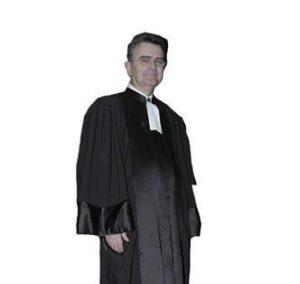Time and geographical origin
The cross may have been created in the South of France by Maystre, a goldsmith in Nimes, around 1688. According to Antoine Valette de Travessac the cross was readily much appreciated thanks to the ‘prophet’ movement. Nevertheless its spreading all over the world in the Reformed community seems recent. The spreading outside southern territories could be attributed to population movements over the last third of the 19th century.
Meaning
The Huguenot cross combines two elements: the cross and a pendant.
The cross has four equal arms, based on the Malta and Languedoc crosses. It has frequently been pointed out that it looked like that of the Holy-Spirit, an order founded by Henri III, which led to various interpretations, such as a veiled reference to the Protestants’ allegiance to the monarchy.
The pendant features a flying dove or the ‘Holy Spirit’. It is also, of course the Whitsun dove.
Materials
The classical material is gold. But they can be found in any material, such as silver, enamel, ceramics, wood, mother-of-pearl, etc.
Derivatives and other jewelry
There are many variations on the cross itself:
- The cross with “trissou”: the dove is replaced by a small bulb, called a “trissou” in the south of France, because of its resemblance to a pestle (“trissou” in Occitan). The motif substituted for the Holy Spirit is an allusion to the Sainte-Ampoule used to crown the kings of France. This Sainte-Ampoule is said to have been brought to Saint Rémy, who baptized Clovis, by a dove;
- The dove and the vial: the dove can be associated with the vial, which it holds in its beak, or with two vials at the end of each of its wings;
- “Cross and vial: in this version, the dove is stylized in the shape of a cross, whose different branches can be decorated in a variety of ways. With its five elements, the “badine”, more common in the southwest, is related to this form;
- The Holy Spirit: the dove is alone. It appears in flight, wings outstretched and beak down. This last type is particularly common in Normandy. The dove is often holding a branch of vegetation, a bouquet or a flower basket.
Contemporary uses: ad libitum!
Drawing up an inventory of contemporary uses of the Huguenot cross would appear to be an impossible task, so closely is it associated with the Reformed spirit, and so often does it appear on all kinds of media (printed on the cover of magazines or Protestant scholarly publications, displayed as pins, buttonhole ornaments, tie motifs, scarves, T-shirts, key rings, etc.).
Its systematic appropriation is a clear indication of the degree of symbolism to which it is attached.







